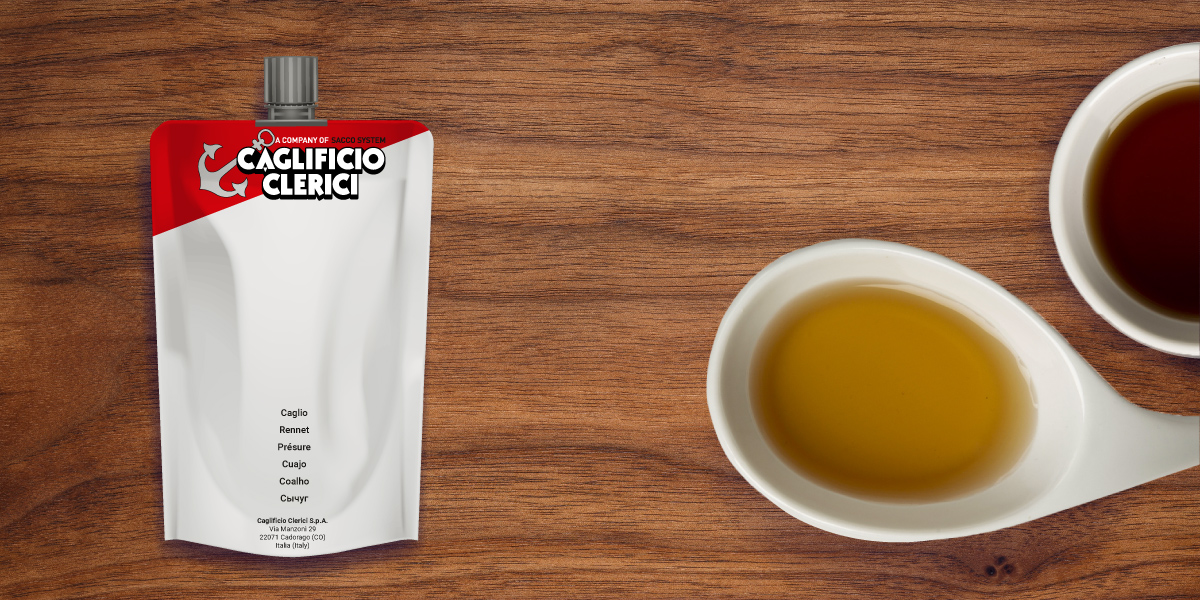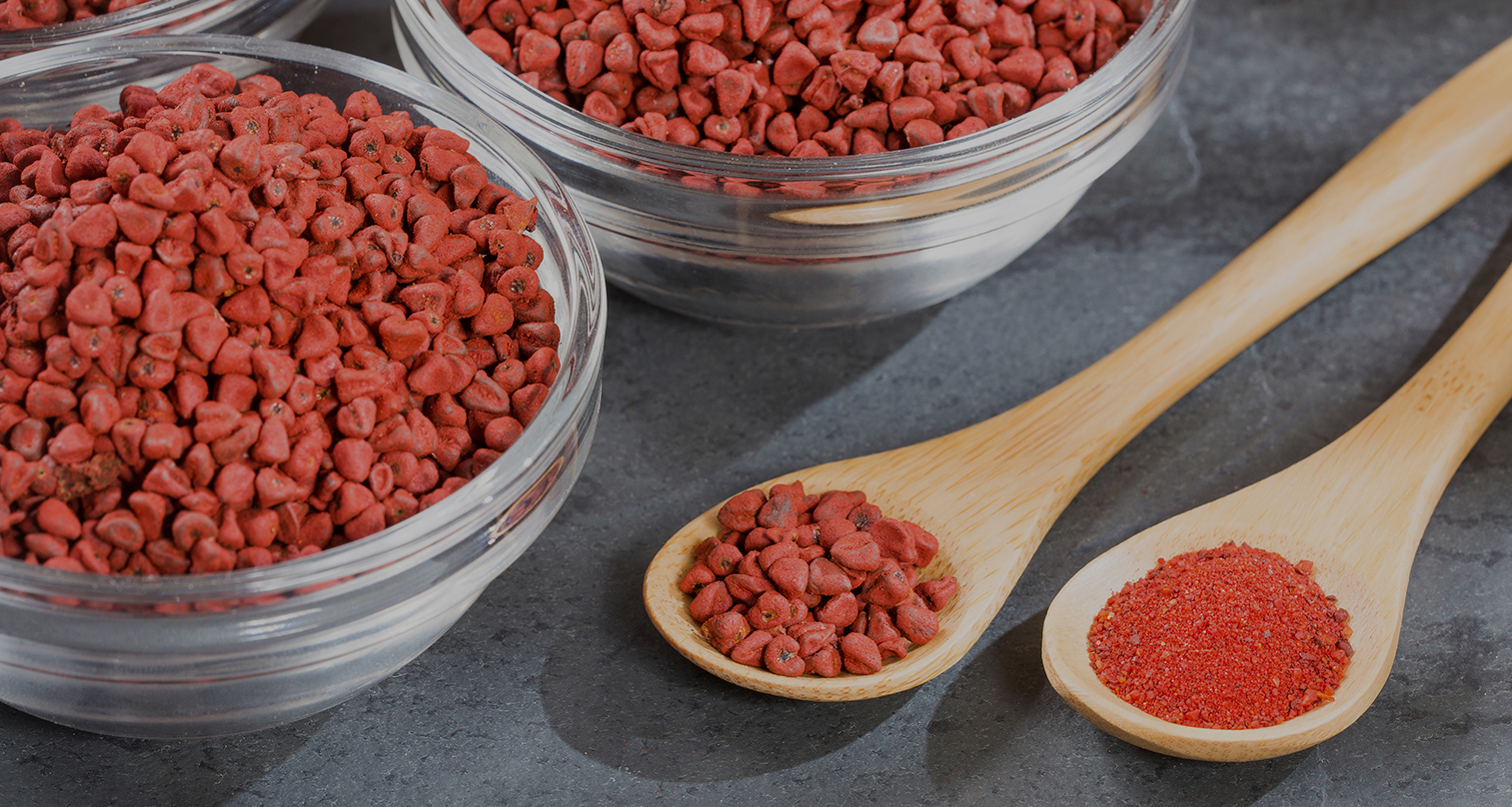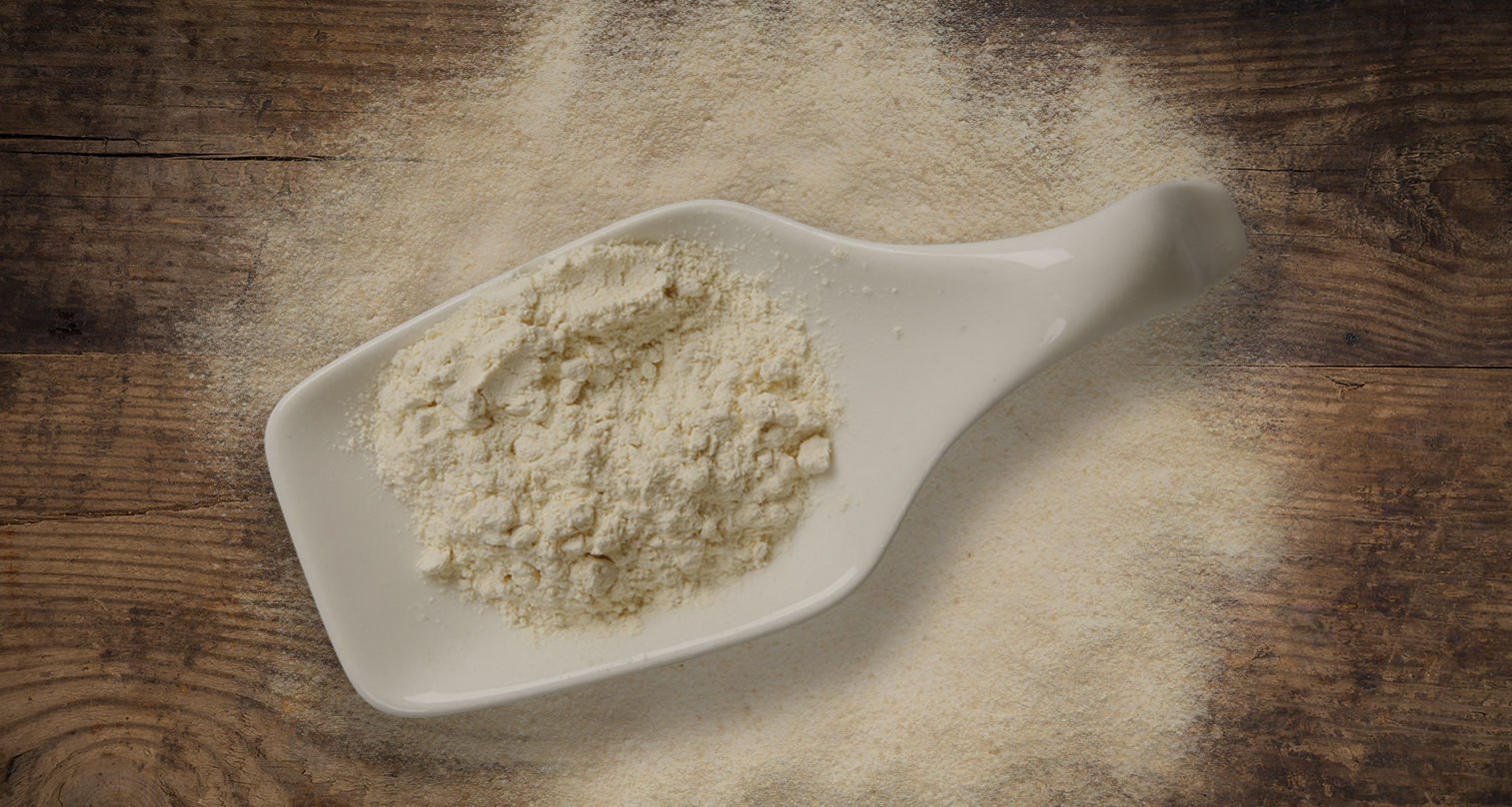
Tradition Gets a Makeover: New Sustainable Packaging for Clerici Liquid Rennet
At Caglificio Clerici, we understand that every activity we undertake has a significant impact on the environment and the people […]
Rennet is a mixture obtained from the extraction of enzyme complexes from the fourth stomach (also known as the ‘abomasum‘) of unweaned ruminant animals such as calf, lamb, kid and buffalo calf.
Naturally occurring enzymes (particularly chymosin and pepsin) are able to break down the casein contained in the milk, resulting in a network of proteins commonly called ‘curd’, the first step in the production of any cheese.
The existence of animal rennet was discovered by chance around 7000 years ago, when the milk was transported using waterskins made from the stomachs of ruminants.
Rennet has always been used by man for the production of cheese and milk products. It is easy to imagine that shepherds knew the coagulating power of the stomach of nursing sheep and used it to produce a milk product that was the ancestor of cheese. What gives the stomach of nursing animals this power is the presence of an enzyme called chymosin.
Chymosin is a specific enzyme, i.e. capable of curdling a specific point of the milk protein called casein. Chymosin helps the animal digest milk by deconstructing the proteins and making them more attackable by other enzymes (called pepsin) present in the animal’s stomach.
Man has been able to use this process to his advantage to coagulate milk, removing the liquid matter (the ‘whey’), thus increasing the shelf life. Cheese, in fact, stores better the less water it contains. The best known example is Grana Padano: consider that for this cheese, invented according to tradition in the abbey of Chiaravalle to conserve the large quantity of milk they had available, 1000 litres of milk yields about 110 kg of cheese.
Liquid rennet is suitable for multiple processes. Rennet is extracted from the fourth stomach of ruminants (calf, buffalo, lamb and kid) and then processed into liquid form.
Liquid rennet is used for a variety of excellent products and cheeses including mozzarella, Taleggio, Grana Padano and Gorgonzola, adapting perfectly to different needs, in full compliance with PDO specifications.
Clerici liquid rennet, which is also available with Halal and Kosher certification, can be purchased with or without preservatives according to product requirements and is perfect for the production of PDO, PGI, AOP and AOC cheeses, hard or soft, raw or cooked, fresh or aged.
LEARN MORE ABOUT CLERICI LIQUID RENNET! >
Rennet powder is a high quality product and therefore especially suitable for the production of fine cheeses and in particular PDO, PGI, AOP and AOC cheeses. Rennet powder is obtained by precipitation from liquid rennet and subsequent drying on sodium chloride.
In this process, with special fractionation techniques, high concentrations of chymosin are obtained and important components of animal rennet are retained, which, in addition to offering a well-determined coagulating action, provide the cheese with specific characteristics during ageing.
Clerici rennet powder has been a benchmark for consistency, strength and performance for over 100 years. It is totally natural, preservative-free and Halal-certified.
The particle size is standardised to avoid creating dust during weighing and to ensure a homogenous enzyme distribution over the surface of the granules and give consistency in spoon dosing.
Available I.M.C.U.: 1620; 1370; 1150; 995; 860.
LEARN MORE ABOUT CLERICI RENNET POWDER! >
Rennet paste is extracted from curds (kid and/or lamb stomachs) and is the most suitable product for the production of typical Italian spicy and semi-spicy cheeses, with cow’s or sheep’s milk.
In addition to its coagulating action due to chymosin and pepsins, rennet paste provides lipolytic action thanks to its lipases . These enzymes act on the milk fats, releasing the fatty acids responsible for thepleasantly tantalising aroma of provolone, pecorino, fiore sardo, rigatini etc.
Clerici rennet paste is created with inspiration from tradition. The lipases contained in it determine the degree of spiciness of the finished product; they are expressed in Cleric Units (C.U.), a specific unit of measurement developed in our laboratories.
The possibility of having pellets from specific geographical areas also allows us to obtain single-origin rennet, in compliance with the strictest PDOs.
LEARN MORE ABOUT CLERICI RENNET PASTE! >
Commonly (but erroneously) called ‘microbial rennet‘ or ‘vegetable rennet’, microbial coagulant is an enzyme extracted from certain naturally occurring moulds and is perfectly capable of coagulating milk.
It is often used for vegetarian productions, typically for fresh or short-ripened cheeses; it is not used for PDO and typical cheeses (the use of different types of rennet is regulated by different laws and production specifications).
Unlike animal rennet, which is much more selective with respect to the protein being cut, microbial rennet performs a more aggressive and random cutting action, lowering the final yield.
The Clerici microbial coagulant, called Microclerici, is an extremely pure vegetable coagulant obtained from the controlled fermentation of Rhizomucor miehei, an important fungus species that produces proteolytic enzymes capable of inducing milk coagulation.
Microclerici can be used in delicate cases such as for the production of vegetarian, fresh cheeses, for well-controlled proteolysis and good taste.
Microclerici’s microbial coagulant is available in both thermolabile and thermostable versions, with Halal and Kosher certifications, in both powder and liquid form, and in a GMO-free version.
Clerici’s microbial coagulant is available in different strengths. Available I.M.C.U.: 140; 220; 680; 2400; 3400
Vegetable coagulant (also often incorrectly called ‘vegetable rennet‘) is the latex produced from the green parts of the fig tree or wild thistle.
The difference with animal rennet lies in its use, as well as its origin. This type of rennet is in fact used in the production of very delicate and particularly creamy cheeses , which are easier to obtain in this way than with animal rennet.
Called Albamax, Clerici pure chymosin genetic coagulant is a coagulating enzyme produced by fermentation of Aspergillus niger var. awamori.
Albamax is a chymosin that can be used for specific production needs. It maintains a low proteolysis so as to minimise yield losses, does not make the cheese bitter, and is formulated for those who want to have a good ratio between coagulation quality and economic price.
Albamax genetic coagulant is available in different strengths with Halal and Kosher certification, both in powder and liquid form.
LEARN MORE ABOUT CLERICI OTHER COAGULANTS! >
There are no real differences between calf, lamb, buffalo and kid rennet, neither at the molecular level nor at the level of use.
The choice of rennet type is based more on tradition or by matching the type of milk used to produce the cheese. For example, to produce buffalo mozzarella from buffalo milk I would use buffalo rennet.
The rennet extraction technique depends on the type of rennet. Animal rennet, as we have seen, is extracted from the stomachs of certain ruminant animals, mainly lambs and calves because young animals possess high concentrations of chymosin, which is necessary to digest their mother’s milk.
Vegetable coagulant (or ‘rennet’) is a substance extracted from certain plant organisms, such as the green parts of the fig tree or wild thistle. Microbial coagulant (or ‘rennet’) is extracted from particular species of mould capable of inducing milk coagulation. Genetic coagulant, on the other hand, is produced from the fermentation of a fungus.
First of all, it is important to distinguish between the different rennet formats that can be obtained: while rennet paste can also be produced at home, the production processes of rennet powder and liquid rennet require a control and production technique suitable for a professional context, and therefore cannot be reproduced at amateur level.
Rennet paste is the historical product of Caglificio Clerici. It is extracted in the traditional way, just as in the past, from suckling lambs and kids.
But how to make it at home? Here is the procedure to follow in order to obtain excellent rennet paste at home:
For a setting time of 15 minutes with goat’s milk, use about 3-4 grams of rennet paste per 5 litres of milk.
As we have already specified, the production of rennet powder and liquid rennet requires industrial processes that are too complex to reproduce at home.
For information purposes, the following are the steps in the production process to obtain rennet powder:

At Caglificio Clerici, we understand that every activity we undertake has a significant impact on the environment and the people […]

What is annatto and where does it come from? Annatto, otherwise known as Norbixin, Orlean or Natural Orange (industrial reference number E 160b) is a yellow-reddish […]

What Natamycin is and what is it for Natamycin (indicated on the label as preservative E235) is a chemical, antibiotic and […]